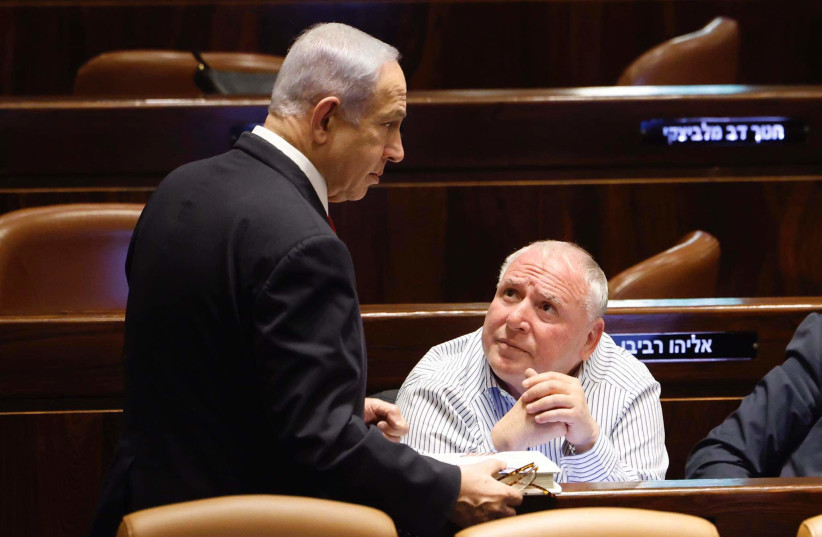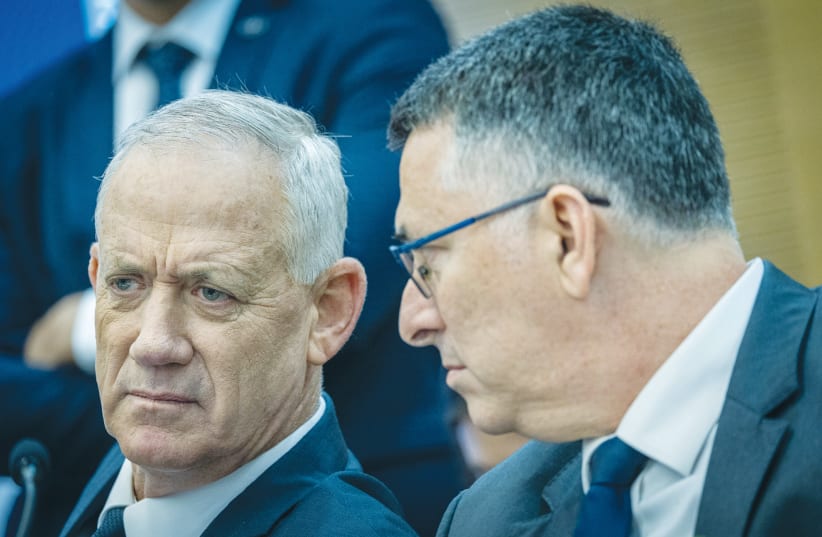In May 2022, when I was Knesset Faction director for the Yamina party and Naftali Bennett was still prime minister, I authored a three-part series on a new vision for Israeli politics. In the first piece I gave a historical background and explained how “Israel’s political Center moved Right”. In the second piece I presented a new model – “Israel: A Jewish, democratic and secure State”. In the third piece, “Exploring Israeli unity as an ideology,” I elaborated on many of the core principles.
I followed up on the series with a supplemental piece after the fall of the 24th Knesset, “What is the future of Israel’s new national camp?”
In today’s post-October 7 reality, I revisit the vision of the new national camp in two installments. In the first segment I will briefly summarize the theory and examine the competing theories.
The NNC theory
The NNC – new national camp – is based on the historical observation that over time, throughout Israel’s modern existence, the middle of the Israeli political spectrum has moved rightward. If once the middle was on the Left and then moved to the Center, it is now firmly on the Right. Israeli political history can be divided into four periods, and each period created a new camp – the Left in 1948, the Right in 1977, the Center in 2005 and the NNC, which began forming during the political crisis that started in 2019.
The old linear political map no longer applies. I present a new vision for how to view Israel: as a Jewish, democratic and secure state. The four Zionist camps are placed into a political triangle with a middle instead of a linear spectrum with a center. The traditional Right, including the incumbent Likud, sits closest to the Jewish side within the triangle, the Left within the democratic side, the Center within security, and the NNC in the middle of the triangle.


The non-Zionist minorities, who do not share the vision, can be placed on the edges of the triangle, with most haredim only on the Jewish side, many Druze on the security side, and most Muslim Arabs only on the democratic side. The four Zionist camps are within the triangle because they believe in all three principles, even if most are slanted to one core principle. In contrast, the non-Zionist camps are generally on the edge of the triangle on a specific side because they only focus on one of the principles.
Each of the four Zionist camps has its own definition and terminology for each of the three pillars. This complicates our political reality. Placed in the middle of the triangle, the NNC is in a unique position to appreciate the different definitions of Jewish, democratic and secure. The NNC is not leaning strongly towards any of the three sides, instead balancing the triangle in perfect symmetry.
The NNC finding the common denominator between the different camps is not just pragmatic real-politic; rather, it is an ideological choice to place the unity of the nation above all. Just as the Center replaced the Left as the main player on one side of the old linear spectrum, the NNC could replace the traditional Right on the other.
Competing theories
There are still those who view Israel as part of a bipolar system with two distinct blocs. Philosopher Dr. Avishai Ben-Chaim labeled the two groups as a “first” Israel vs “second” Israel. The late political strategist Arthur Finkelstein viewed the divide as “Jews” vs “Israelis.” Most use simpler terminology: Right vs Left, the national camp vs the Center-Left bloc, the conservatives vs the liberals, the nationalists vs the progressives or the pro-Bibi vs anti-Bibi blocs (referencing the nickname of current Likud leader and Prime Minister Benjamin Netanyahu).
Regardless of the actual wording or framing, this bipolar system was the accepted majority position held by most Israelis during the 2021 Knesset election and the political discourse that followed the formation of the “64 MK Bloc” until October 7.
There are also those who see Israel divided into three – Right, Left, and a very big Center. This “hybrid” group in the center, as Israeli philosopher Dr. Micha Goodman labels them, agree on the principles and disagree on the details, or agree on the goals and argue about the means.
This is a popular view in the post-October 7 reality where Israelis are seeking unity and a wider coalition that includes more representation beyond the traditional right parties. This also explains the meteoric rise of the centrist National Unity faction led by Benny Gantz, particularly after he joined the emergency national unity government.
However, this worldview is difficult to reconcile following the split of the National Unity faction, with Gideon Sa’ar leaving with a third of the faction MKs to form his own party, and recent scenario polls showing that many Israelis are seeking new alternatives that include leaders who are not sitting in the current Knesset.
Early in the term, during the vote on canceling the disengagement in northern Samaria in the Knesset Defense & Foreign Affairs Committee, Gantz loyalist MK Gadi Eisenkot voted against, and Sa’ar loyalist MK Ze’ev Elkin voted for. Gantz and Sa’ar voted differently on legislation regarding deporting convicted terrorists and their families and the failed attempt to impeach Hadash MK Ofer Kasif for his backing of the ICJ genocide case against Israel.
They canceled each other out on the biggest votes on the most significant national security and diplomatic policy issues. Sa’ar clashed with Gantz on war policy in Gaza, publicly criticized Gantz for his official visit to DC against the wishes of the Prime Minister and left the government after Sa’ar wasn’t elevated to the War Cabinet upon his split from Gantz.
These disagreements weren’t limited to Gantz and Sa’ar, with the right flank of Gantz’s party voting with Sa’ar (and against Gantz’s position) on these and other occasions. In many of these cases most of the faction voted with Sa’ar and against Gantz or made a point not to be present for the vote. All of this proves that it was a faction built with different value systems and different policy positions.
In my following piece I will measure the NNC model within the framework of the current political climate, including, a current scenario poll and the political reality of post-October 7 Israel.
Part 2 will appear in next Sunday’s newspaper.
The writer has held various elected and appointed political positions on the local and national levels.
